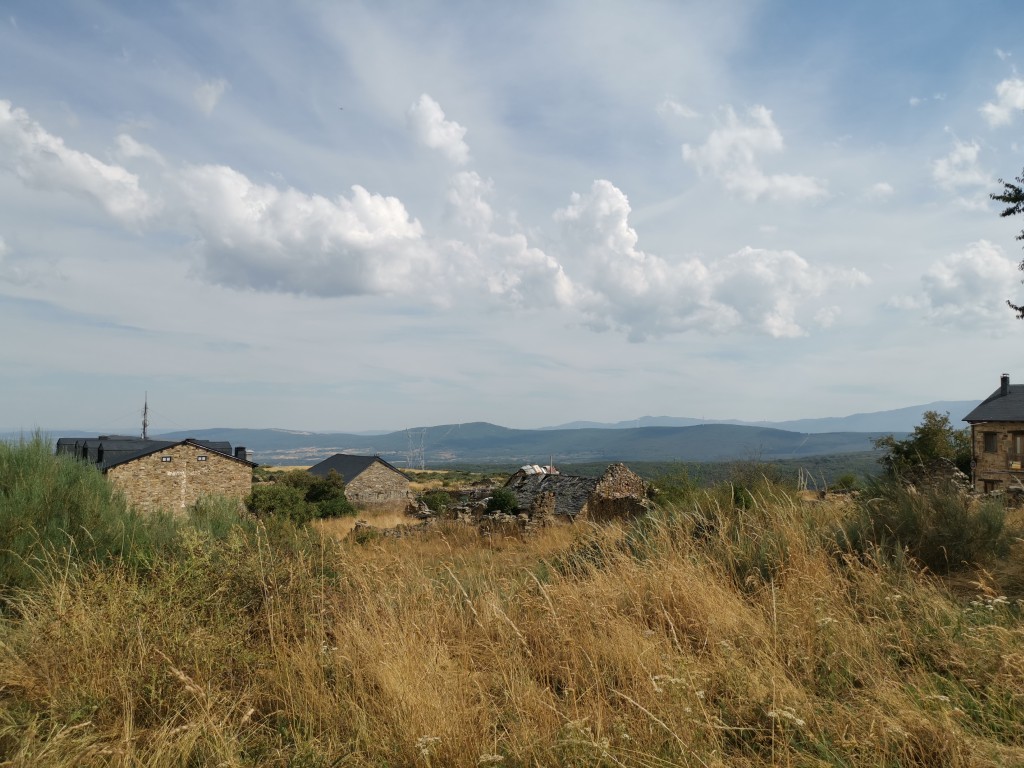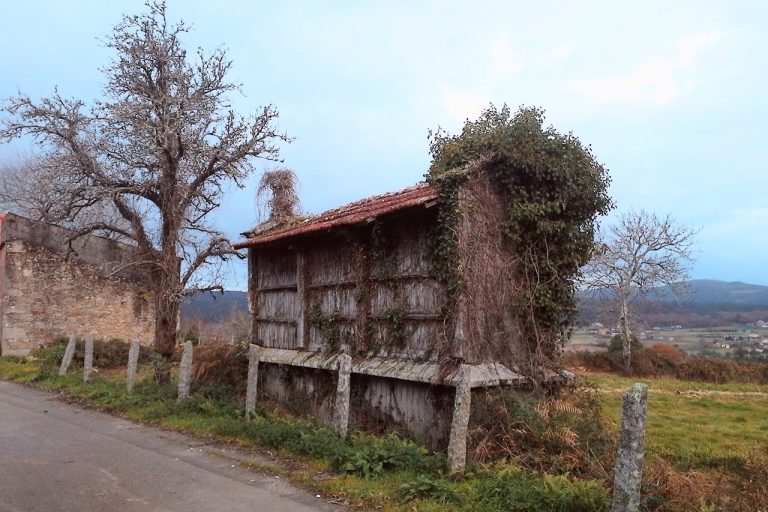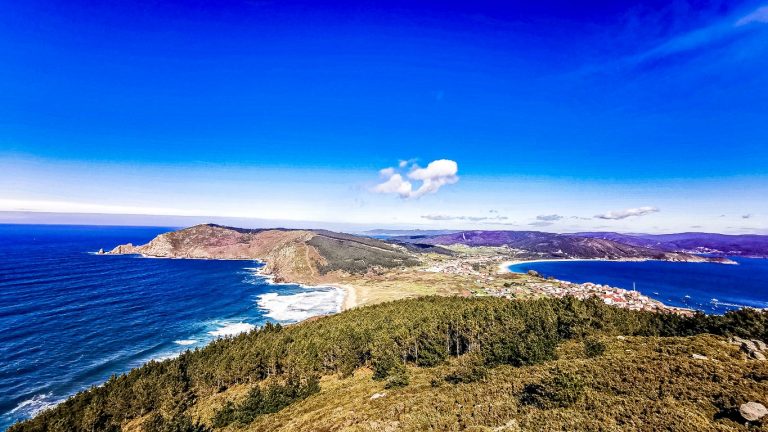
A New Stage Day – Introduction & Atmosphere
With today’s stage, a noticeable transition begins: you leave the plain around Astorga and climb slowly but steadily into the mountains of the Maragatería. The landscape becomes more original, the villages smaller, and history comes even closer to the Camino. After just over 21 kilometers you reach Rabanal del Camino, a place full of Camino tradition, considered the ideal starting point for the ascent to Foncebadón and the Cruz de Ferro.
The Maragatería welcomes you with its unmistakable architecture of stone and wood, as well as its culinary specialty, the hearty Cocido Maragato – a dish as rich as the culture of this region.












Route & Elevation Profile
- Distance: 21.2 km
- Elevation gain/loss: +370 m / –180 m
- Difficulty: medium/easy, with gentle but steady ascent
- Character: Village-to-village hike, stronger ascent at the end, first heralds of the Montes de León
Description of the Path – With All Senses
From the Plaza de España in Astorga you walk past the cathedral and Gaudí’s Episcopal Palace out of the city. Soon you reach the small village of Valdeviejas with the Ermita del Ecce Homo. This small medieval chapel was once a pilgrim hospital – today you can obtain stamps for the Credencial.
Through fields and across the A-6, the path leads to Murias de Rechivaldo, which, with its parish church of San Esteban (18th c.) and the remains of an old mill building, marks the entrance into the Maragatería. Those who wish to take a variant can walk from here via Castrillo de los Polvazares – one of the most beautiful villages in Spain, a perfectly preserved Maragato village with cobbled streets and stone houses.
Back on the main route, you continue to Santa Catalina de Somoza, a typical pueblo-Camino with church and pilgrim cross. The steady ascent continues, not difficult but with little shade. Soon you reach El Ganso, where the church of Santiago and the remains of an old 12th-century hospital testify to the deep Camino heritage.
From here the path becomes rockier and wilder. You pass a long stretch lined with wooden pilgrim crosses tied to the fence – silent testimonies of the gratitude and hope of countless pilgrims. Across fields and woodland the Camino climbs further, until suddenly Rabanal del Camino opens up before you.
Intermediate Places & Special Features
| Place | Distance from Start | Special Feature | Tip |
| Valdeviejas | 1.7 km | Ermita del Ecce Homo, pilgrim hospital | Credencial stamp |
| Murias de Rechivaldo | 4.2 km | Parish church San Esteban, mill | Cafés & small albergues |
| Castrillo de los Polvazares (Variant) | +1 km | Fully preserved Maragato village | Worth the detour |
| Santa Catalina de Somoza | 4.2 km | Pilgrim hospital, cross | Meal opportunity |
| El Ganso | 4.3 km | Church of Santiago, old hospital, Roman gold mines | Atmospheric bars |
| Rabanal del Camino | 6.9 km | 12th-c. church, traditional pilgrim village | Stage destination |
Packing & Shopping Tips
- Little shade: sun protection, hat, and plenty of water are essential.
- Food: options in Murias, Santa Catalina, and El Ganso.
- In Rabanal a good choice of albergues and restaurants – ideal to gather strength for the ascent to Foncebadón.
Food, Accommodation & Services
- Murias, Santa Catalina, El Ganso: Bars, small albergues.
- Rabanal del Camino: Albergue Gaucelmo (famous, donativo-run house of the English Confraternity of Saint James), municipal albergue, as well as numerous private accommodations and guesthouses.
The Special Aspect Today
The Maragatería is a unique cultural landscape, shaped by the Maragatos – traders and muleteers who transported goods between the coast and the interior. Their stone architecture, massive house doors, and village structures are unmistakable on the Camino.
The village of Castrillo de los Polvazares is the “pearl” of the region. Those who take the short detour will be rewarded with one of the most beautiful villages in Spain: perfectly restored streets, stone houses, an open-air museum of Maragato culture.
In El Ganso, the church of Santiago with the chapel of “Cristo de los Peregrinos” recalls medieval pilgrim life. Nearby are the Roman gold mines of La Fucarona – silent relics of an ancient mining past that shaped the region.
Rabanal del Camino itself has been an important pilgrim village since the Middle Ages. Here the Benedictines founded a monastery that cared for pilgrims, and even today the monks of San Salvador del Monte Irago shape spiritual life with prayers and Gregorian chants. Rabanal is not just a stage destination, but a spiritual anchor point.
With this stage the pilgrim finally leaves behind the plain of the Tierra de Campos and the Meseta, climbing gradually into the Montes de León. The route first leads through the Maragatería, where stone villages with their wide portals and quiet streets define the character of the landscape. Gradually the scene changes: horizons narrow, oak and pine forests appear, and the air becomes clearer and cooler. It is a stage of transition – from wide open to mountainous, from resting to rising.
The destination, Rabanal del Camino, is far more than just a stage stop. Already in the Middle Ages it was a spiritual center with a Benedictine monastery and hospice for pilgrims. Even today a special spiritual atmosphere can be felt: the silence of the stone houses, the small Romanesque church where Gregorian chant resounds, and the presence of the Benedictine monks of Santo Domingo de Silos, who revived monastic life here in 1990. Thus Rabanal is not only the starting point for the famous Cruz de Ferro, but also a place of inner reflection, where many pilgrims pause to gather strength for the ascent.
Reflection at the End of the Stage
This stage brings you into the heart of the Maragatería. The landscape opens the view onto Monte Teleno, the stone houses tell of a proud culture, and the churches and crosses along the path recall centuries of pilgrim tradition. Upon reaching Rabanal, the anticipation is palpable: tomorrow begins the ascent to the Cruz de Ferro – one of the holiest places of the entire Camino.
📊 Tabular Overview
| Stage | Start | Destination | Distance | Elevation Gain/Loss | Difficulty | Intermediate Places |
| 24 | Astorga | Rabanal del Camino | 21.2 km | +370 / –180 | medium/easy | Valdeviejas, Murias, Santa Catalina, El Ganso |
🌌 Camino of the Stars – Stage 24:
Astorga → Valdeviejas → Murias → (Variant: Castrillo de los Polvazares) → Santa Catalina → El Ganso → Rabanal del Camino
Have you been to Castrillo de los Polvazares and experienced the Maragato flair? Would you recommend the detour?


